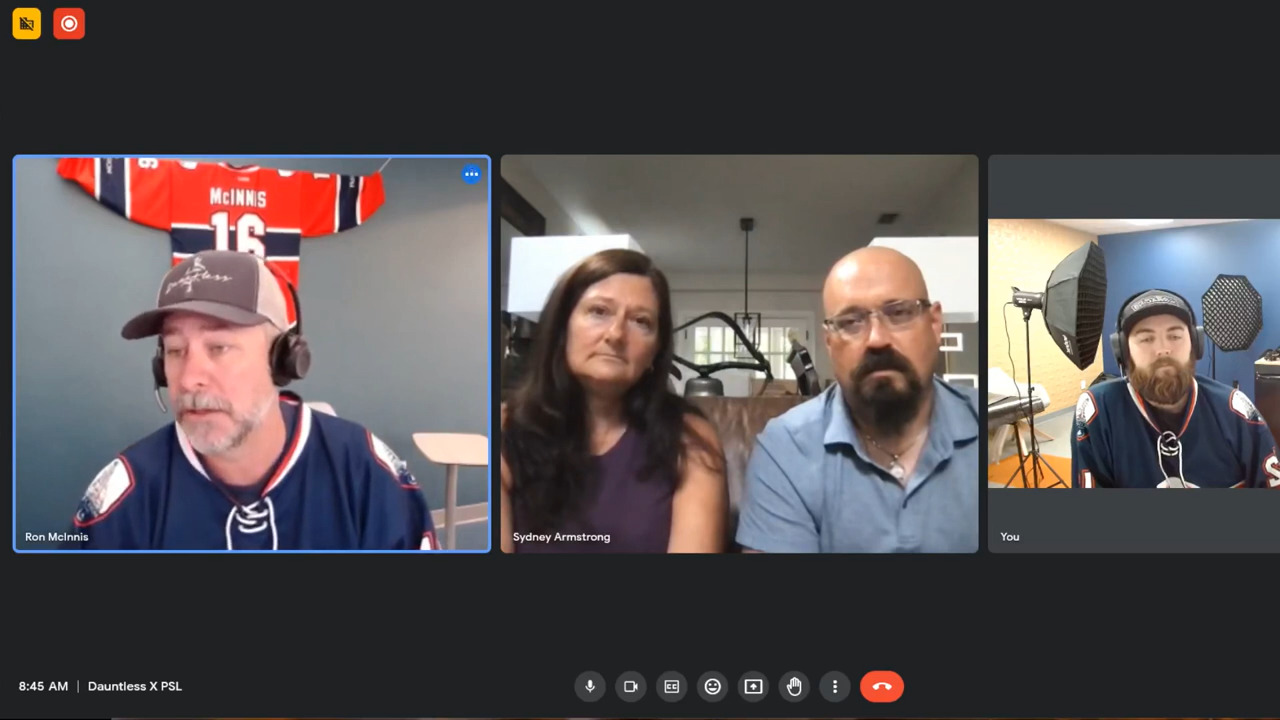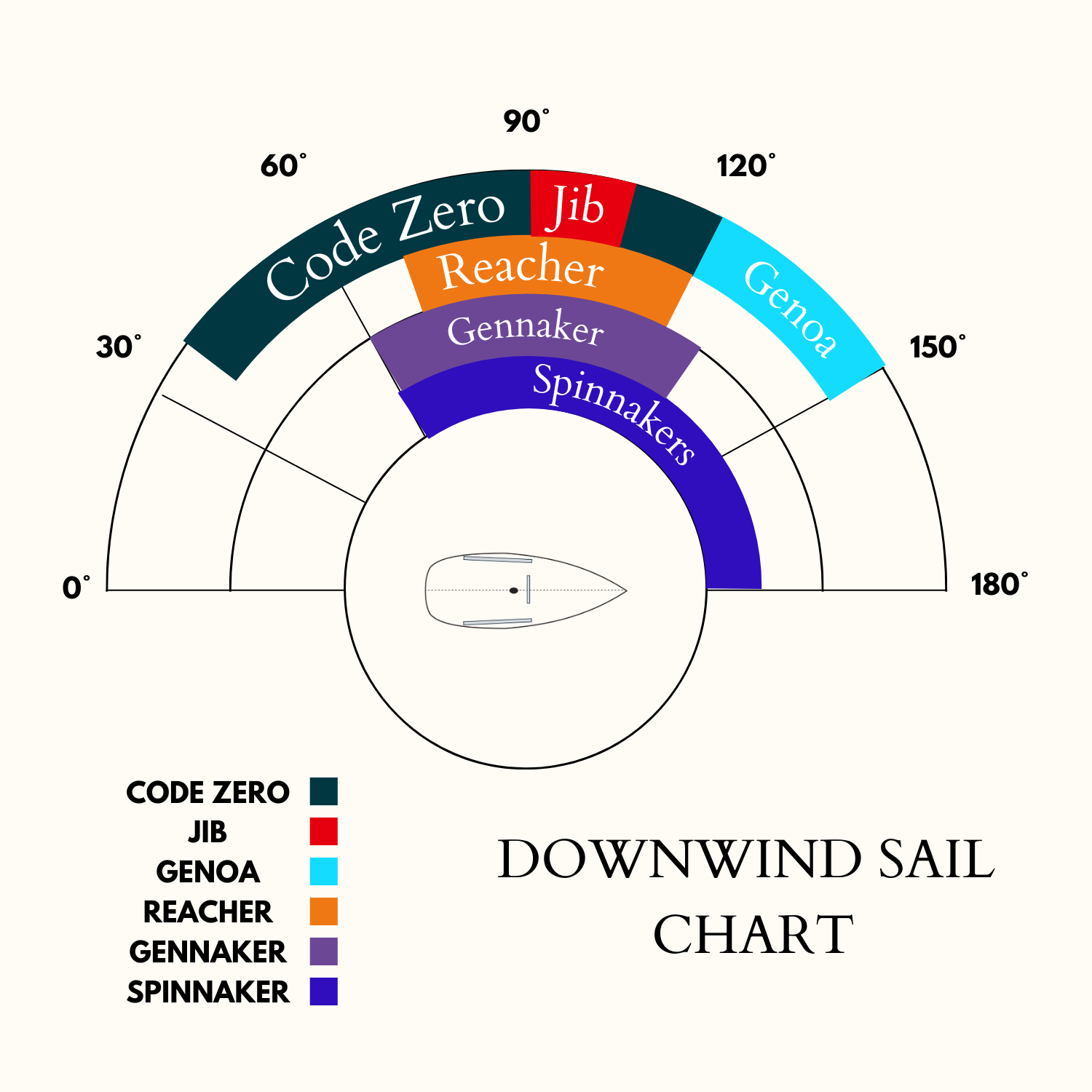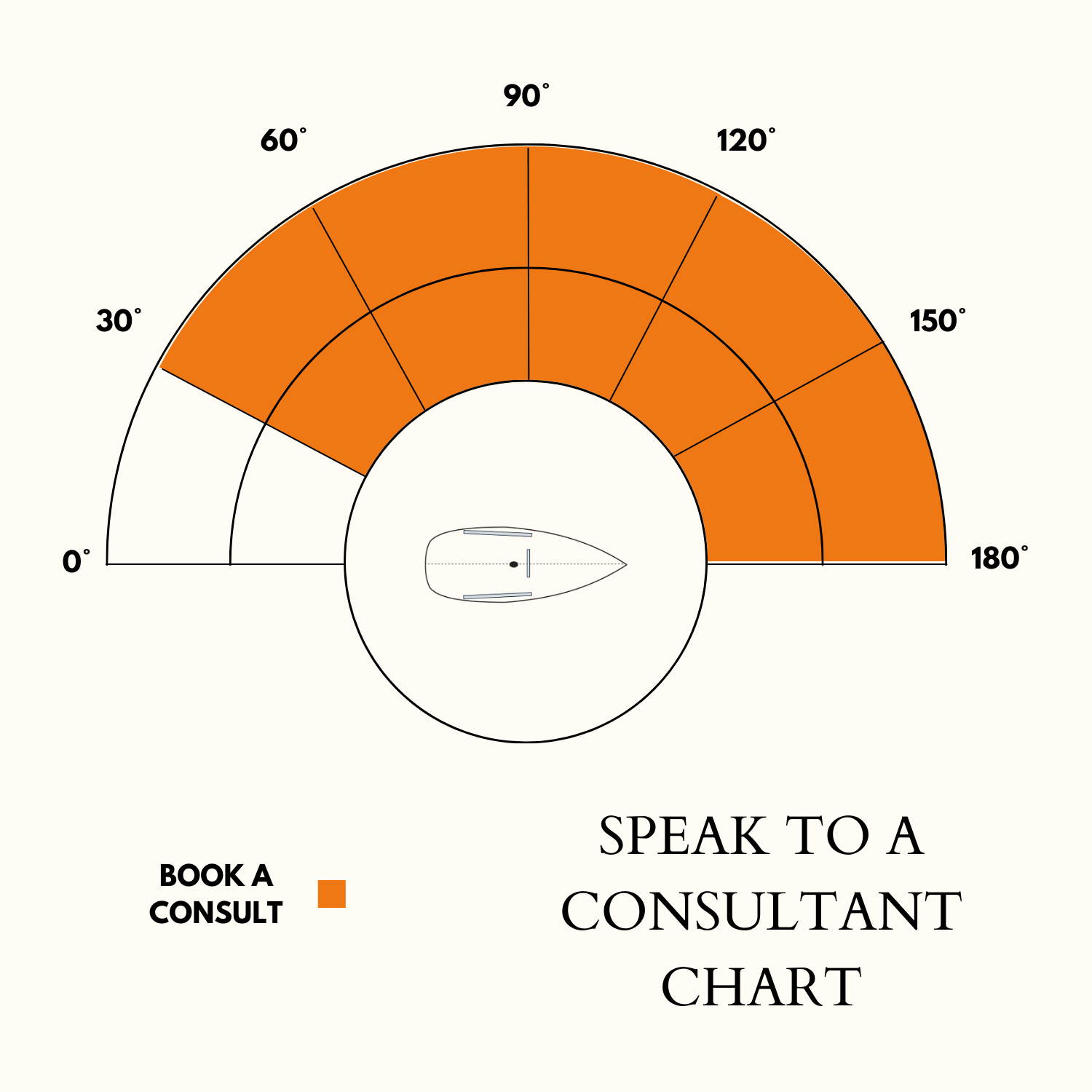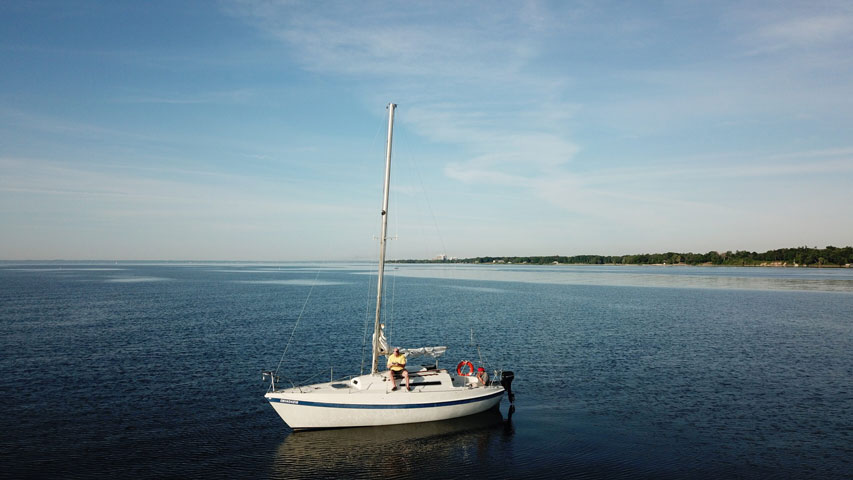When it comes to sailing, having the right set of sails is essential for a smooth and enjoyable experience on the water. For cruisers, in particular, finding the right sails can sometimes be a challenge, as the sail-making world has traditionally focused more on racing sails. However, there are sailmakers like Precision Sails that have recognized the need for high-quality sails tailored specifically to the needs of cruisers.
In a recent discussion between Sailing Dauntless, a sailing YouTube channel you may know, and the experienced experts here at Precision Sails, the topic of downwind sails came up. In this article, we will explore the different types of downwind sails commonly used by cruisers, such as code zeros and genoas, and delve into the factors to consider when building a sail inventory. So, let’s dive in!
Read along or watch the video of our interview with Dauntless.
Understanding the Terminology
When it comes to sail terminology, it can be quite overwhelming, especially for those new to sailing. Different regions and countries may have varying names for similar types of sails, adding to the confusion. However, rather than getting caught up in the jargon, it’s important to focus on understanding the purpose and functionality of the sails.
In the world of jibs and genoas, the terms can differ depending on the location and the type of boat. For instance, in some regions, a genoa refers to a larger light-wind sail, while a jib is a smaller sail designed for heavier winds. However, it’s crucial to remember that these names may not be consistent globally or even between different types of boats.
Defining Head Sail Size with Percentages
Headsail sizes are often denoted in percentages. For example, you may come across references to 115%, 135%, or 150% sails. But what do these percentages actually mean?
The percentages represent the LP (Left Perpendicular) measurement in comparison to the J measurement of the boat, which is a method to calculate the area of a triangle. The Luff Perpendicular (LP) is the distance from the clue (the trailing corner of the sail) to the leading edge of the sail at the perpendicular point. This measurement allows sail designers to determine the size of the sail.
To visualize this, imagine a triangle formed by the height of the mast (known as the “I” measurement) and the J measurement, which is the distance from the base of the mast to the base of the forestay. By calculating the area of this triangle, designers can determine the size of the sail. The LP measurement divided by the J measurement gives a rough estimate of the sail’s size.
Tailoring the Sail Inventory
For cruisers, building a sail inventory involves considering factors such as available space, budget constraints, and intended sailing destinations. Not everyone needs a vast array of sails like hardcore racers who may have multiple sails onboard and a crew to handle them.
When it comes to head sails, such as jibs and genoas, it’s essential to define the sail’s purpose based on your specific needs. For instance, genoas are typically larger light-wind sails, while jibs are smaller. Precision Sails often categorizes genoas as sails starting around 120-130% LP and going up to 150%, providing better performance in light winds. On the other hand, jibs are smaller and more suitable for heavy weather conditions and are typically 80% – 120% LP.
Collaborating with Sail Designers
One of the advantages of working with sail designers, such as Precision Sails, is the opportunity for customization and optimization of sails based on your specific needs. Collaborating with sail designers allows you to tailor your sail inventory to match your sailing style, the conditions you typically encounter, and the destinations you plan to visit.
Sail designers have the expertise to help you choose the right type of downwind sails for your cruising needs. They can guide you through the process of selecting sails such as code zeros, spinnakers, genoas, and other downwind options that will enhance your sailing performance and enjoyment.
If you’ve read this far, and need sails, how about you request a quote? Once you’re done with that, let’s take a closer look at some of the common types of downwind sails:
Common Downwind Sails
Here’s our breakdown of some of the key differences between different downwind sails.
Code Zeros
A code zero is a versatile downwind sail that is ideal for light to moderate wind conditions. It is typically used when sailing at angles between a true downwind course and a close reach. Code zeros are known for their ability to generate power and provide good speed in light winds. They have a high aspect ratio and a flat shape, which allows them to maintain their shape and performance even when the wind is light.
Code zeros are typically designed to be flown from a bowsprit or a specialized furler, and they are often made from lightweight materials to maximize their efficiency in light wind conditions. These sails are easy to handle and can be furled or unfurled quickly, making them a popular choice for cruising sailors.
Genoas
Genoas are another type of downwind sail commonly used by cruisers. They are larger headsails that are designed to provide good performance in light to moderate wind conditions. Genoas are usually categorized based on their LP percentage, with sizes ranging from around 120% to 150% LP.
The larger size of genoas allows them to capture more wind and generate power when sailing downwind or on a broad reach. They are effective in light winds and are often used when sailing in trade wind regions or during long downwind passages. Genoas can be made from a variety of materials, including dacron, laminate, or other high-performance fabrics.
Cruising Spinnakers
Most cruising sailors choose asymmetrical spinnakers or simply “asyms” . They are designed to be easy to handle and versatile in a wide range of wind conditions and angles and can be flown without the need for a spinnaker pole. Cruising spinnakers are typically made with lightweight nylon fabrics and have a unique shape that allows them to be used as light wind-reaching sails and can also provide good downwind performance.
These sails are versatile and can be used on various points of sail, including reaching and running. Cruising spinnakers are particularly effective in light to moderate wind conditions and can add excitement to your sailing experience. They are available in different sizes and designs, allowing you to choose the one that suits your boat and sailing preferences.
Other Downwind Options
In addition to code zeros, genoas, and cruising spinnakers, there are other downwind/ light wind sails that cruisers may consider adding to their sail inventory. These include reachers, gennakers, and traditional symmetrical spinnakers.
Reachers
Reachers are designed for broad and beam-reaching courses and provide good performance in moderate wind conditions. They are typically easier to handle than symmetrical spinnakers and can be flown from a bowsprit or a specialized furler.
Gennakers
Gennakers are a hybrid between genoas and spinnakers. They can be designed to be flown with a furler, spinnaker sock, or a turtle bag and offer versatility in a wide range of wind angles and conditions. Gennakers are often used for cruising and can provide good performance on reaching and downwind courses.
Symmetrical Spinnakers
Symmetrical Spinnakers are traditional downwind sails that require a spinnaker pole to be set (on monohulls). They can be designed to be effective in stronger winds and are commonly used for downwind racing or when sailing in breezier conditions. Symmetrical spinnakers offer excellent downwind performance and can be flown on a broad reach or a run.
It’s important to note that handling a symmetrical spinnaker can be more challenging compared to other downwind sails. Setting and dousing the spinnaker requires coordination between the helmsperson, trimmer, and crew members. Additionally, gybing the sail while maintaining control can be more demanding. Therefore, symmetrical spinnakers are more commonly used by experienced sailors or when racing with a dedicated crew.
Overview
When considering downwind options, it’s essential to assess your sailing goals, experience level, and the prevailing wind conditions in your sailing area. Sail designers can assist you in determining the most suitable downwind sails based on these factors, ensuring you have a well-rounded and optimized sail inventory.
Collaborating with sail designers like Precision Sails allows you to benefit from their expertise, as they can provide personalized recommendations, assist with sail customization, and ensure the sails are tailored to your boat’s specifications. We are here to help – you can book a consultation here.
Remember, choosing the right downwind sails can significantly enhance your sailing experience, making it more enjoyable, efficient, and safe.





